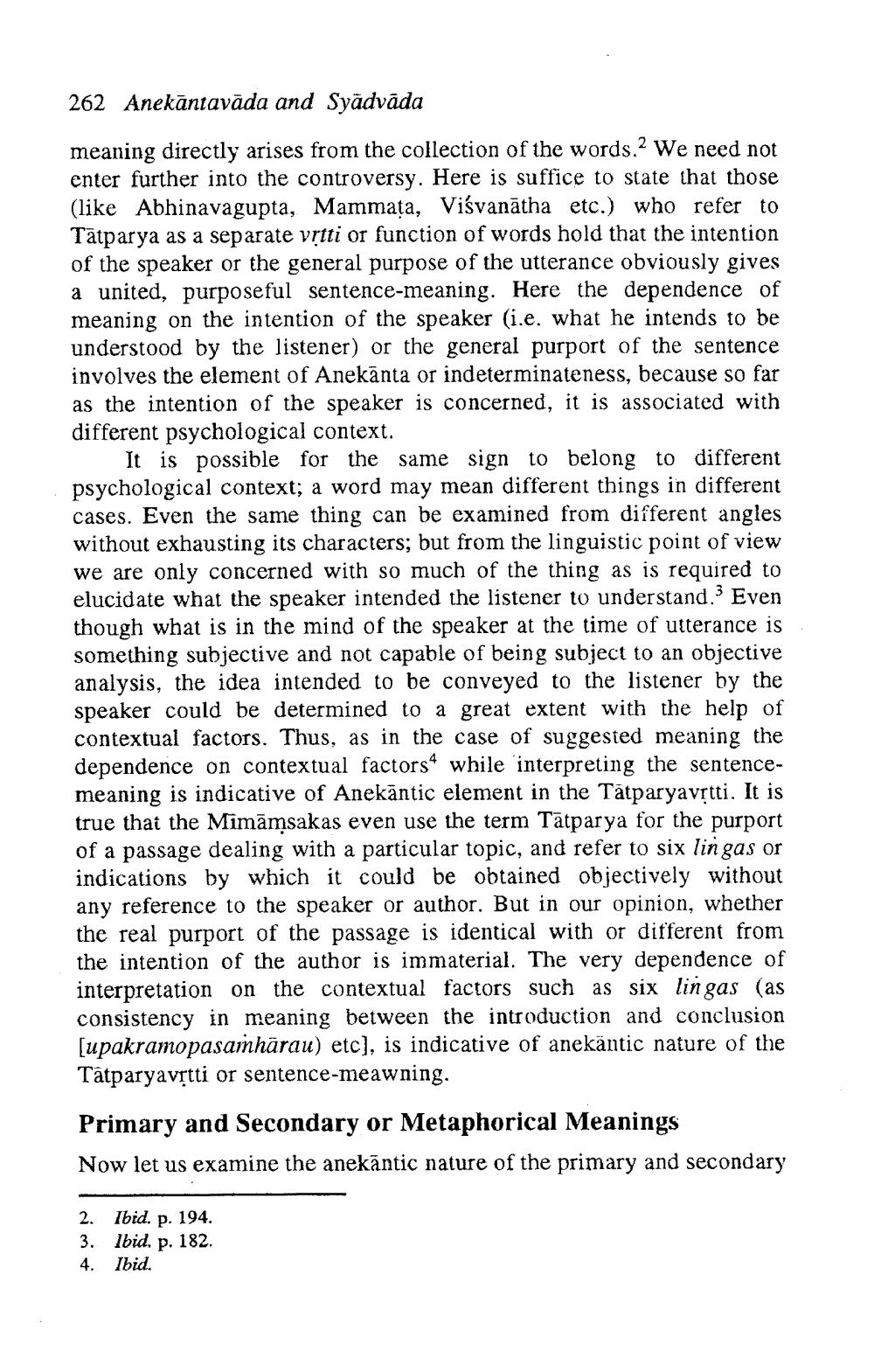________________
262 Anekāntavāda and Syādvāda
meaning directly arises from the collection of the words. We need not enter further into the controversy. Here is suffice to state that those (like Abhinavagupta, Mammața, Viśvanātha etc.) who refer to Tātparya as a separate vrtti or function of words hold that the intention of the speaker or the general purpose of the utterance obviously gives a united, purposeful sentence-meaning. Here the dependence of meaning on the intention of the speaker (i.e. what he intends to be understood by the listener) or the general purport of the sentence involves the element of Anekānta or indeterminateness, because so far as the intention of the speaker is concerned, it is associated with different psychological context.
It is possible for the same sign to belong to different psychological context; a word may mean different things in different cases. Even the same thing can be examined from different angles without exhausting its characters; but from the linguistic point of view we are only concerned with so much of the thing as is required to elucidate what the speaker intended the listener to understand. Even though what is in the mind of the speaker at the time of utterance is something subjective and not capable of being subject to an objective analysis, the idea intended to be conveyed to the listener by the speaker could be determined to a great extent with the help of contextual factors. Thus, as in the case of suggested meaning the dependence on contextual factors while 'interpreting the sentencemeaning is indicative of Anekāntic element in the Tätparyavrtti. It is true that the Mimāmsakas even use the term Tātparya for the purport of a passage dealing with a particular topic, and refer to six lingas or indications by which it could be obtained objectively without any reference to the speaker or author. But in our opinion, whether the real purport of the passage is identical with or different from the intention of the author is immaterial. The very dependence of interpretation on the contextual factors such as six lin gas (as consistency in meaning between the introduction and conclusion [upakramopasamhārau) etc), is indicative of anekäntic nature of the Tātparyavrtti or sentence-meawning.
Primary and Secondary or Metaphorical Meanings Now let us examine the anekāntic nature of the primary and secondary
2. 3. 4.
Ibid. p. 194. Ibid. p. 182. Ibid.




